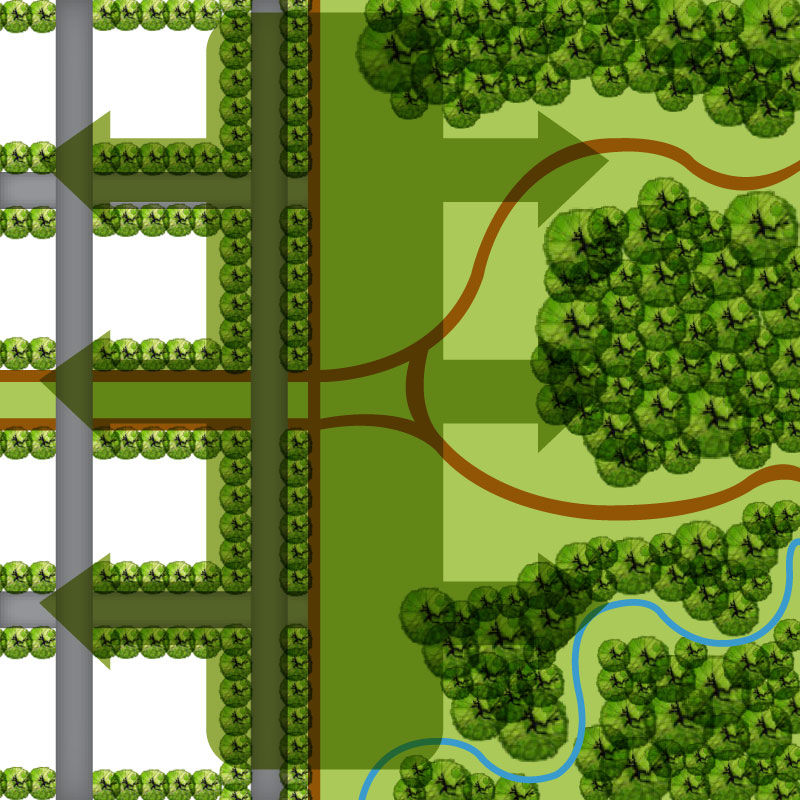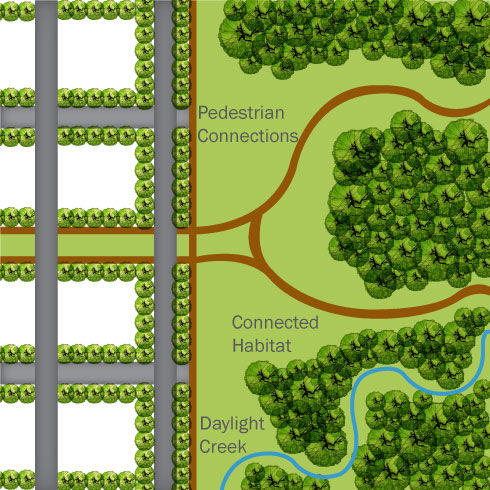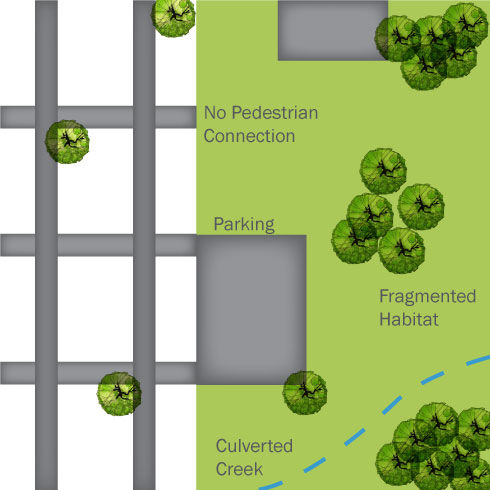Urban osmosis provides
a chance to rethink open
space design.
Park design is breaking down the division between nature and culture, both inside and outside park boundaries. Urban osmosis provides a chance to rethink open space design.
Cell membranes admit viable nutrients—like water and oxygen—and block toxins—like poisons and destructive microorganisms. Park boundaries can be seen to function similarly. For example, pedestrians, water, and light would be allowed in, while excessive vehicles and incompatible land uses would be kept out. This process is a fundamental strategy of urban osmosis: healthy elements permitted, inappropriate practices denied.


